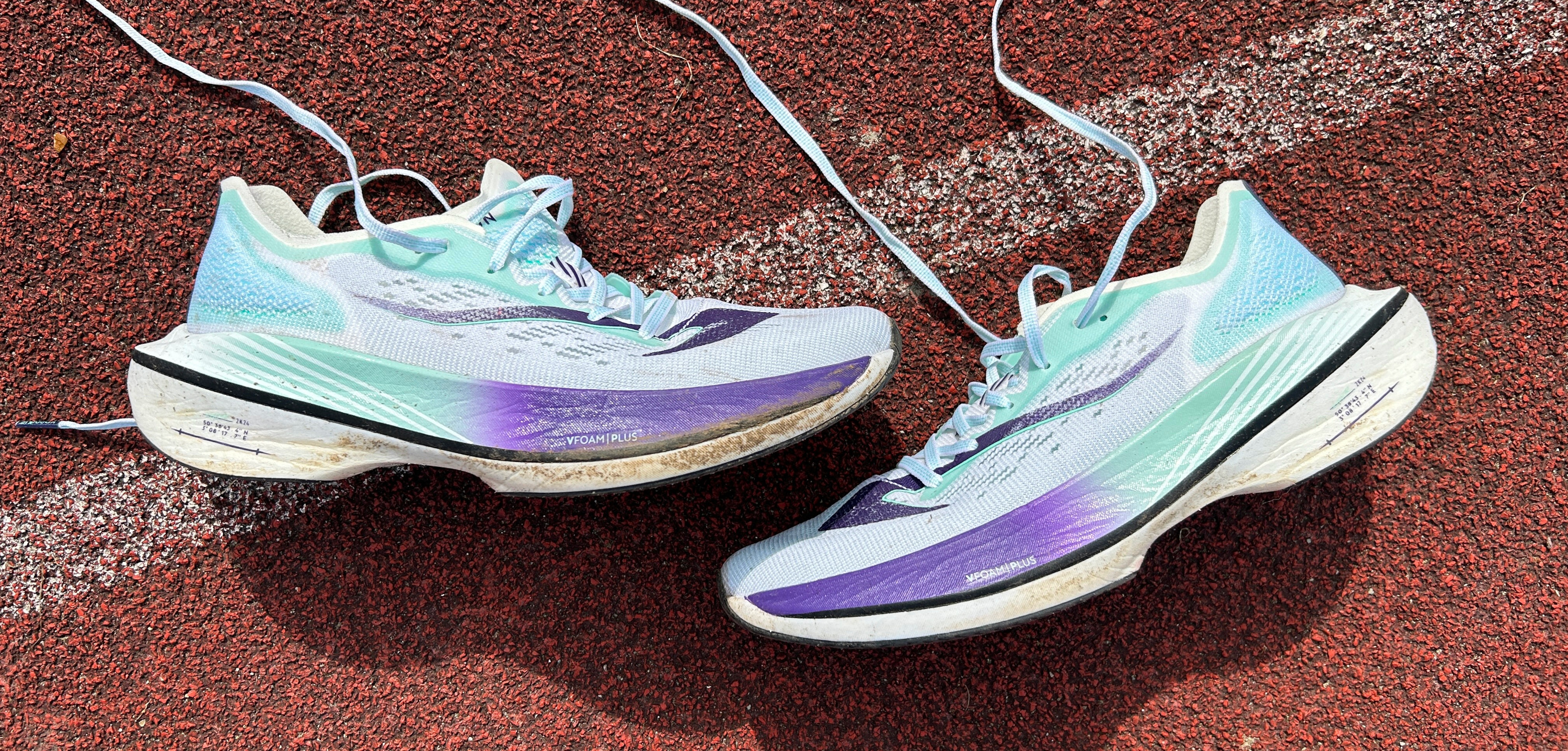Our Verdict
The Kiprun KD900X LD is the second carbon plate racing shoe from Decathlon and a big improvement on the Kiprun KD900X, with a softer, lighter and springier midsole foam. It’s good value too, although it lacks the propulsive feel of the best carbon plate running shoes.
For
- Good value
- Bouncy, comfortable ride
- Lightweight
Against
- Upper cut my foot
- Not as propulsive as the best racers
You can trust Coach
The best carbon plate running shoes do not come cheap, so when Decathlon announced the original Kiprun KD900X—a carbon racing shoe for £130—I was excited. However, the Kiprun KD900X was a firm shoe that lacked the feel and performance of top super-shoes, and while still a fast and durable option for training, it didn’t really rival the likes of the Nike Vaporfly.
Decathlon has come back stronger with the Kiprun KD900X LD. It’s more expensive than the KD900X, but still relatively cheap, and offers a higher level of performance thanks to the updated midsole foam. If you want the best racer then there are faster shoes available, but the Kiprun KD900X LD is an excellent option for those on a budget.
Kiprun KD900X LD: Price And Availability
The Kiprun KD900X LD launched in April 2024 and is available from Decathlon. It costs £159.99 in the UK and €180 in the EU, but it’s not sold in the US. It’s £30 more expensive than the Kiprun KD900X, the first carbon plate shoe from Decathlon, but significantly cheaper than most carbon super-shoes, which usually cost at least $250/£220.
How I Tested This Shoe
I have run just over 30 miles in the Kiprun KD900X LD, using it for a mix of training runs including a testing track session and a progression run finishing at my goal marathon pace. I have also tested the Kiprun KD900X (although it was stolen before I could complete my testing for a full review) and almost all of the best carbon plate running shoes available from major brands.
Design And Fit
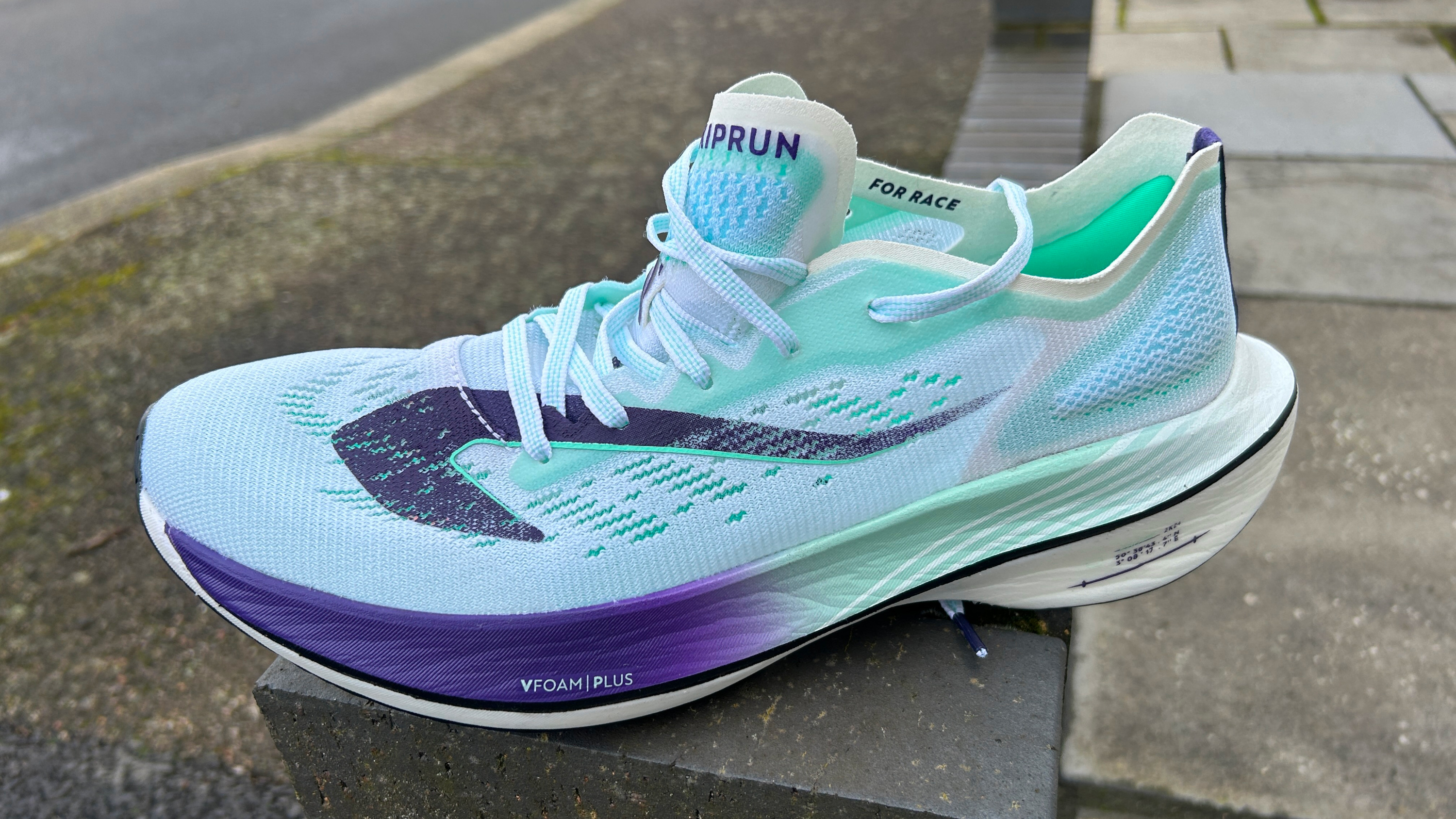
The main change to the Kiprun KD900X LD compared with the KD900X is in midsole foam. It’s changed from VFOAM to VFOAM PLUS, and while both are Peba-based materials, the PLUS is softer, lighter and bouncier.
Decathlon has halved the drop of the shoe to 4mm, with a 36.8mm stack height at the heel and 32.8mm at the forefoot. This means there’s more foam under the forefoot, which will also increase the comfort of the ride compared with the firm feel of the Kiprun KD900X.
Despite the extra foam, the weight has gone down. The Kiprun KD900X LD weighs 8.1oz/230g in a UK size 9/EU 44. That’s a lot lighter than my review sample of the Kiprun KD900X, which was 8.8oz/249g in a slightly smaller size, an EU 43.5.
Sign up for workout ideas, training advice, reviews of the latest gear and more.
Like the KD900X, the KD900X LD came up long for me, and I would recommend going at least a half size down on your normal running shoe size. There’s too much room in the toe box, and although I didn’t experience any slipping at the heel, I did find the plastic strip on the upper that contains the lace eyelets cut into the top of my right foot just below the ankle.
This was particularly bad on my first and longest run in the shoe, which was around 13 miles. On my runs since I haven’t had the problem to the same extent, so hopefully it’s something that goes away when the shoe breaks in a bit, but it’s a concern if you’re planning to use the shoe for a marathon.
Aside from this, the breathable open-knit mesh upper was fine and held my foot securely when running fast. It’s a lightweight material and has minimal padding around the collar and tongue, as you’d expect from a racing shoe.
A midsole cut-out on the bottom of the shoe displays the carbon plate. There is exposed foam in the middle of the bottom of the shoe, but two patches of rubber at the heel and a larger section on the forefoot cover the main impact areas. The Kiprun KD900X was built to last 1,000km and while the softer midsole might reduce the lifespan of the Kiprun KD900X LD, I still expect it to be a long-lasting shoe.
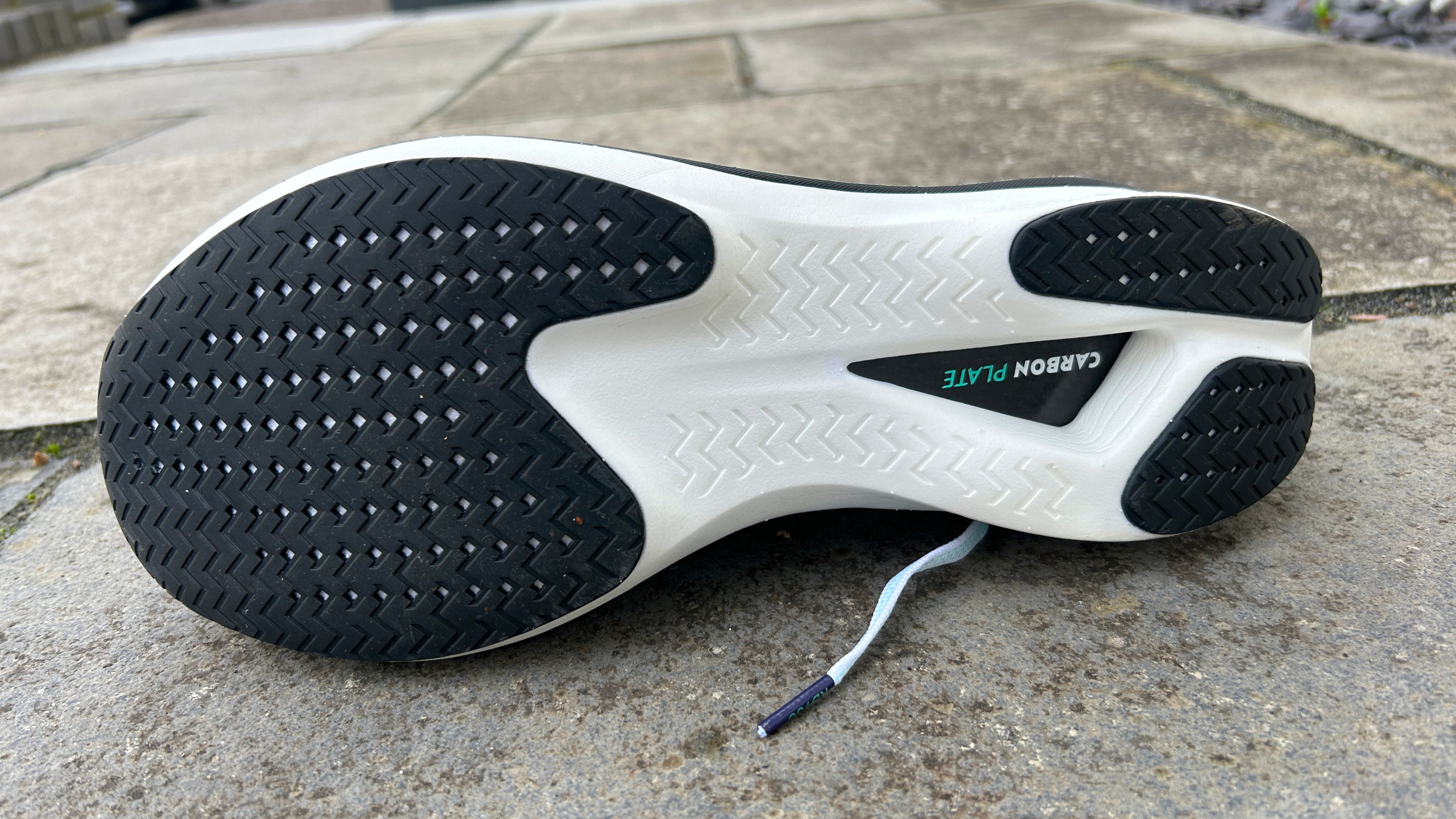
Running Performance
The Kiprun KD900X LD is notably softer and bouncier than the KD900X, and feels more in line with other super-shoes. It’s not as springy as shoes like the Nike Alphafly 3 or Hoka Cielo X1, but VFOAM PLUS is a pretty bouncy material and it’s a lot more comfortable than VFOAM.
That’s particularly noticeable under the forefoot, where there’s more foam. You get a springier toe-off as a result, and I had no discomfort under the forefoot on my longest run in the KD900X LD.
I did a track session in the shoe running four miles at 5min 40sec/mile, my goal marathon pace, followed by 12 reps of 400m alternating 72sec and 77sec per rep. The Kiprun KD900X LD was comfortable when cruising along at marathon pace and sprightly enough for the shorter reps.
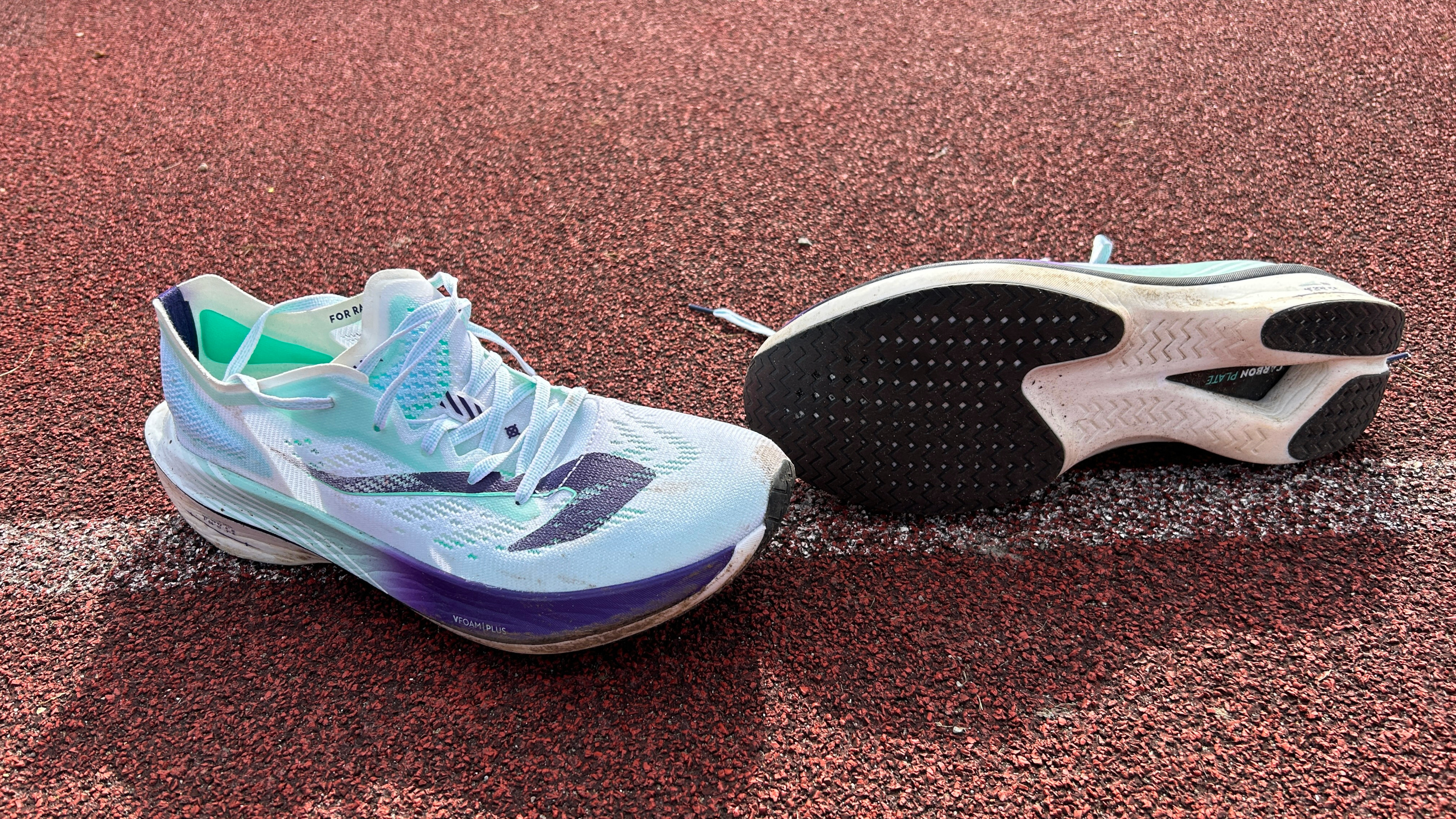
It has a flatter ride than many super-shoes owing to the low drop, and it’s not a highly rockered shoe. I noticed the day after the session that my legs were more beaten up than usual the day after training in a super-shoe. The Kiprun KD900X LD also puts a bit more strain on your calf muscles than higher-drop racing shoes, which may affect heel-strikers like myself more than forefoot-strikers.
The ride is less propulsive and feels less fast than the best super-shoes, and the KD900X LD suffered in comparison with the very bouncy and rockered Hoka Cielo X1, which I was using at the same time. However, the Kiprun shoe has quite a natural feel, and I was comfortable using it for easy paces as well as fast ones, which is not true of some super-shoes that feel worryingly wobbly and unnatural at slow speeds.
Is The Kiprun KD900X LD Worth It?
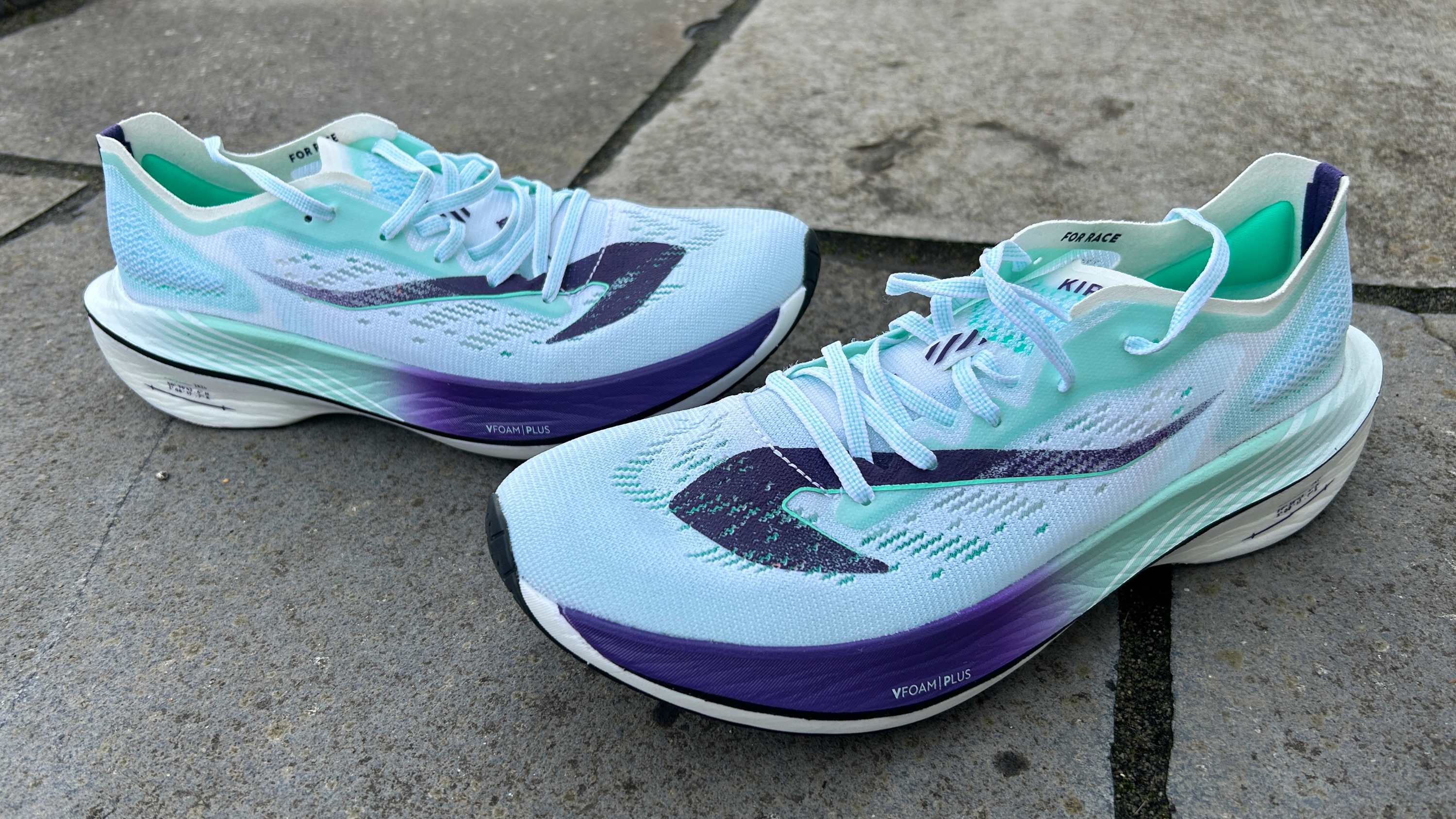
If you’re willing to spend big money on your racer, the Kiprun KD900X LD is not among the best carbon plate running shoes. My standout picks at the moment are the Asics Metaspeed Sky Paris, Nike Alphafly 3, Nike Vaporfly 3 and Hoka Cielo X1.
However, it is significantly cheaper, and there’s no shoe available for a list price of £160 I’d rather race in—if I could get the fit right to avoid any unwelcome friction with the plastic strip on the upper. Even the best super-trainers like the Saucony Endorphin Speed 4 or Adidas Boston 12, which are closer in price, don’t match the speed of the Kiprun KD900X LD.
The biggest competition to the Kiprun KD900X LD for those who are looking for a cheaper racing option comes from the discounts available on older carbon shoes. The likes of the Asics Metaspeed Sky+, Adidas Adizero Adios Pro 3 and Saucony Endorphin Pro 3 are often available in sales, and if you can get them or other older carbon shoes for around £160, they are stronger racing options.
I was impressed by the Kiprun KD900X LD, though, and it’s not far off the standard of those shoes. It’s now a racing alternative at a lower price that’s worth considering, whereas the original KD900X was more of a long-lasting training option than a true racer.

Nick Harris-Fry is a journalist who has been covering health and fitness since 2015. Nick is an avid runner, covering 70-110km a week, which gives him ample opportunity to test a wide range of running shoes and running gear. He is also the chief tester for fitness trackers and running watches, treadmills and exercise bikes, and workout headphones.
